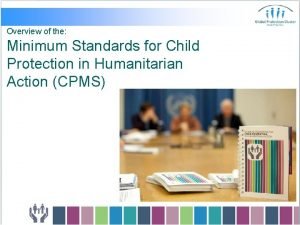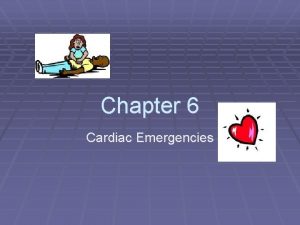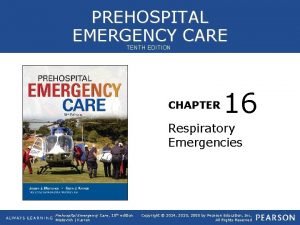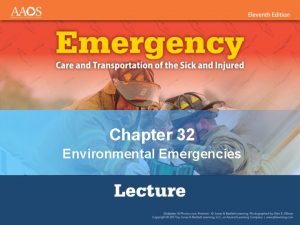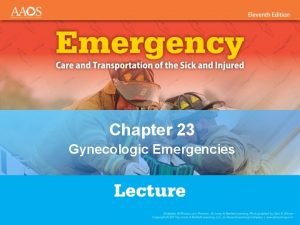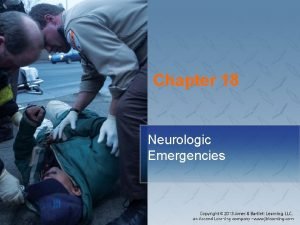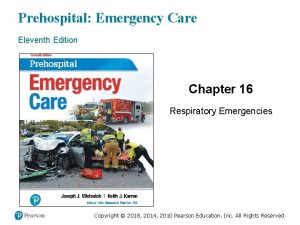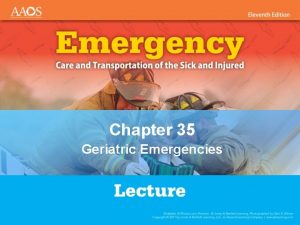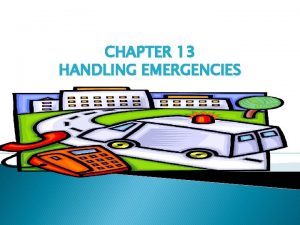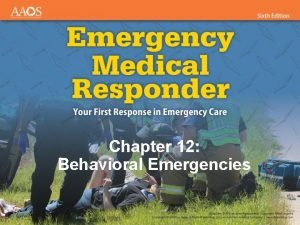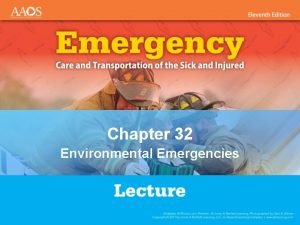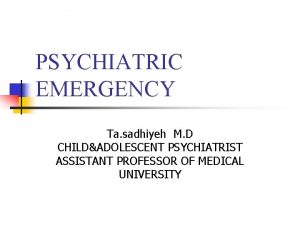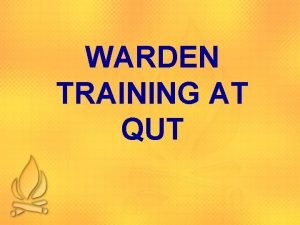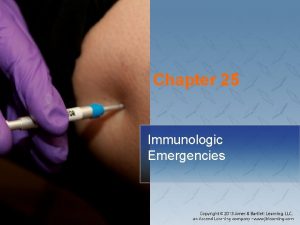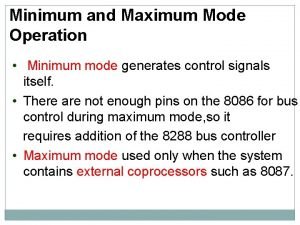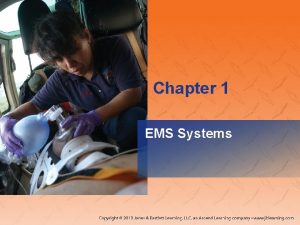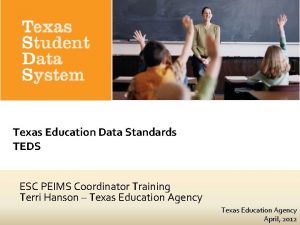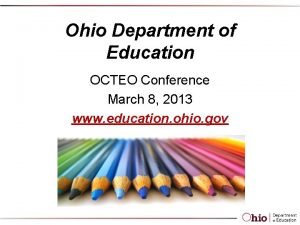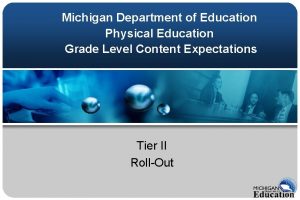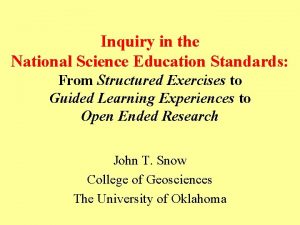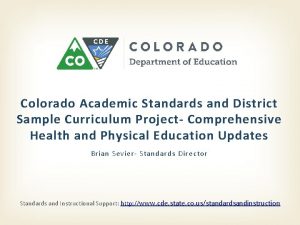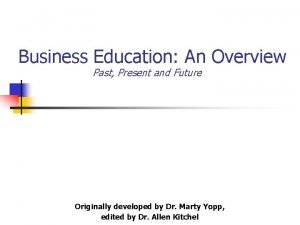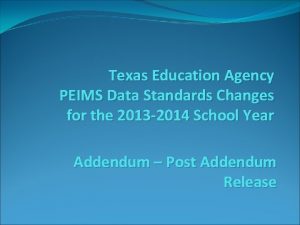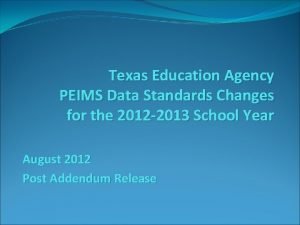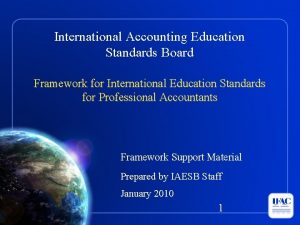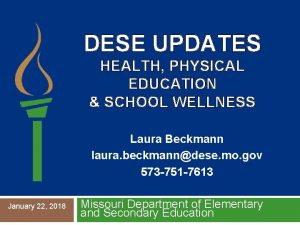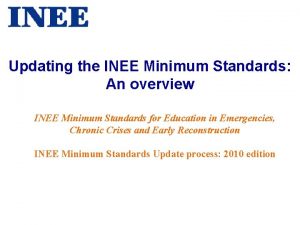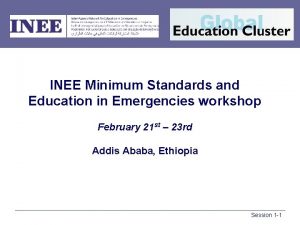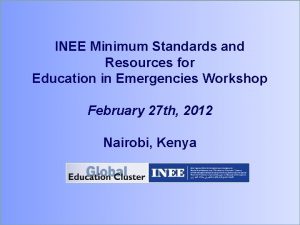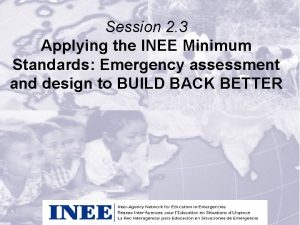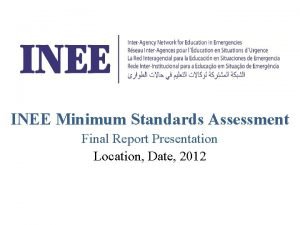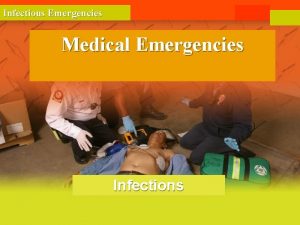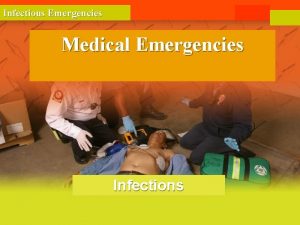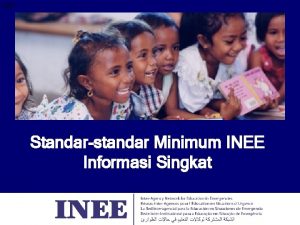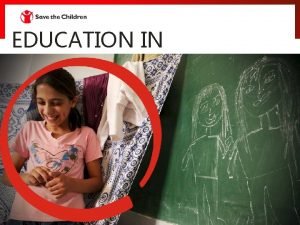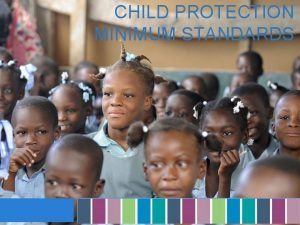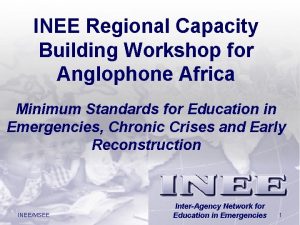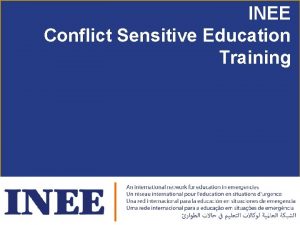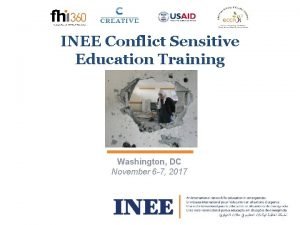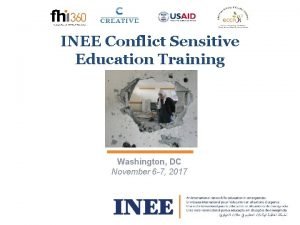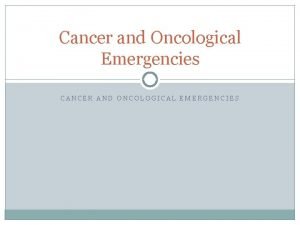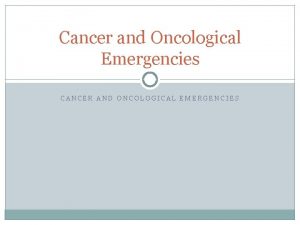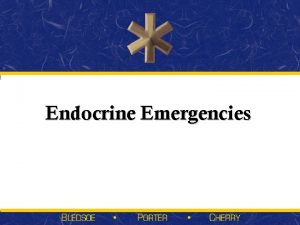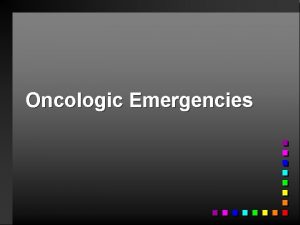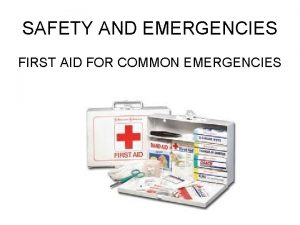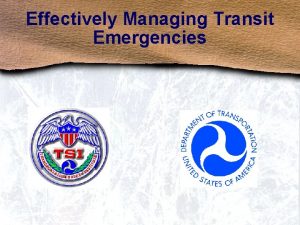INEE Minimum Standards and Education in Emergencies workshop









































- Slides: 41

INEE Minimum Standards and Education in Emergencies workshop March 2 nd University of Toronto Canada Session 1 -1

INEE and the INEE Minimum Standards for Education Session 1 -2

Inter-Agency Network for Education in Emergencies (INEE) § § § Network, not incorporated agency 7000+ members in 170 countries Members: UN, NGOs, Donor Agencies, MOEs, Academic Inst Guidance from the INEE Steering Group & INEE Strategic Plan 5 full-time staff in the INEE Secretariat (NY, Paris, Geneva) Network Activities § Working Groups, Task Teams, Language Communities, Edu Clusters § Trainings and capacity development on Ei. E § Policy Roundtables, Global Consultations on Ei. E, Fragility Issues § Knowledge sharing on Ei. E through website and listservs § Tools for practitioners: www. ineesite. org/toolkit § Jobs in Ei. E: www. ineesite. org/jobs § Join INEE at www. ineesite. org/join

Definition of Education in Emergencies “The provision of quality education opportunities that meet the physical protection, psychosocial, developmental and cognitive needs of people affected by emergencies, which can be both lifesustaining and life-saving “ Session 1 -4

Education is a RIGHT and… Sustains life by: § Offering structure, stability and hope for the future § Helping to heal bad experiences § Building skills, supporting conflict resolution and peace-building Saves lives by: § Protecting against exploitation, harm and rights violations § Disseminating vital survival messages and skills (landmine safety, HIV/AIDS prevention) § Reducing maternal mortality

The Sphere Project § Rwanda & concerns of quality and accountability in humanitarian responses § Emphasis on the “right to life with dignity” § Minimum Standards on: o Water, sanitation and hygiene promotion o Food security, nutrition and food aid o Shelter, settlement and non-food items o Health services § INEE-Sphere Companionship Agreement www. sphereproject. org

Goal of the INEE Minimum Standards § Common starting point to reach a minimum level of educational quality and access § Tool to improve coordination and enhance accountability and predictability § Tool for capacity-development and training § Aid to strengthen the resilience of Ministries of Education § Tool to promote education/advocacy Session 1 -7

History of the INEE Minimum Standards § Developed through a consultative process in 2003 - 4 § Updated in 2009 – 2010 (some modifications) § Assessment of the value added of the standards 2011 - 12 Session 1 -8

Updated INEE Minimum Standards handbook § Strengthening of context analysis and key issues (mainstreaming) § INEE Minimum Standards for Education § More user friendly § Foundational standards § Key actions rather than key indicators § Coordination standard moved Session 1 -9

5 Domains and 19 Standards Domain 1: Foundational Standards §Community Participation and Resources §Coordination §Assessment, Response, Monitoring and Evaluation Domain 2: Access and Learning Environment §Equal access §Protection and Well-being §Facilities and Services Domain 3: Teaching and Learning §Curricular §Training, Professional Development and Support §Instruction and Learning Processes §Assessment of Learning Outcomes Domain 4: Teachers and Other Educational Personnel §Recruitment and Selection §Conditions of Work §Support and Supervision Domain 5: Education Policy §Law and Policy Formulation §Planning and Implementation Session 1 -10

Standards, Key Actions, Guidance Notes § Standards - are what you want to reach. They are qualitative and universal, applicable in any environment. § Key Actions - are suggested actions/steps to be taken in order to reach/meet the standard. § Guidance Notes – cover points of good practice to consider when applying the minimum standards and adapting the key actions in different situations. Session 1 -11

11 Cross-Cutting Issues § § § Conflict Mitigation Disaster Risk Reduction Early Childhood Development Gender HIV and AIDS Human Rights Inclusive Education Inter-sectoral linkages Protection Psychosocial support Youth Session 1 -12

INEE MSE and the Right to Education § The Right to Education even in emergency situations § Coherent with human rights as they articulate a universal ‘minimum’ level of educational quality, access and provision. § Designed to complement and help strengthen national standards and laws Session 1 -13

INEE MSE and the Education Cluster “The INEE MSE are the foundational tool used by the Education Cluster to provide a framework to ensure quality education response” The education cluster helps to operationalise the INEE MSE before, during and after emergencies. Session 1 -14

The INEE MSE and National Authorities § Support to National Authorities is a joint priority for INEE and the Cluster system § Provide technical and operational support for National Authorities to strengthen MOE mechanisms and capacity for response coordination at national and local levels § Using the standards to support national standards, laws and policies § Sharing learning from Ei. E practice Session 1 -15

The INEE Toolkit § The Toolkit contains more than 800 practical, field-friendly tools and resources to guide those working in the field of education in emergencies through to recovery. § This Toolkit includes INEE’s primary publications in multiple languages & numerous implementation tools (such as MS Handbook, case studies, articles, etc. ) to support their use. Session 1 -16

Education in Emergencies Research Session 1 -17

Background: Ei. E Research § Early research focused on refugee education § CRC spurred research into conflict affected populations § Machel Study on Children Affected by Armed Conflict highlighted specific importance of education § Creation of INEE and INEE MS has prompted Ei. E research but it is an emerging research field Session 1 -18

INEE and Research § INEE does not conduct research § INEE does not fund research BUT… • INEE is often asked to suggest research priorities and to provide advice on how to expand the evidence base for the field • INEE can connect researchers and practitioners and policy makers • In 2009 commissioned the Strategic Research Agenda Session 1 -19

INEE Academic Space For academics to share their work with INEE members and the Ei. E community http: //www. ineesite. org/post/academic_sp ace/ To share your work (e. g. theses, dissertations, integrated projects, conference papers, and/or articles), please email academics@ineesite. org Session 1 -20

The Strategic Research Agenda § To engage and connect researchers, practitioners, policymakers and donors working in Ei. E § To build collaborative consensus around research gaps and themes § Developed consultatively and will be revised regularly § Currently a static document but will become a searchable web platform Session 1 -21

The Strategic Research Agenda http: //www. ineesite. org/post/research/ Session 1 -22

Ei. E Research coverage and gaps Education in Emergencies: Research Methodologies Identifying Successes and Gaps § Scoping study to map current and past research methodologies used by Academics and Practitioners § Identifies unique successes and gaps in evidence base Session 1 -23

Ei. E Research coverage and gaps Most research is; § on education in conflict and post conflict settings § is qualitative § looks at refugee and IDP populations Session 1 -24

Ei. E Research coverage and gaps Quantitative Research § Largely collected to inform EFA agenda § Ostby and Urdal (2010) Review of quantitative empirical literature on education and civil conflict § Quantitative review focusing on negative effects of education on conflict would be a valuable addition § Burde (2011) Randomised trial Session 1 -25

Ei. E Research coverage and gaps Qualitative Research § Primary method § Use of observation, case studies, interviews (most common), participatory research with children and visual research § Most literature uses mixed methods approach (questionnaires) § Wide range of sample sizes § Most research short term duration Session 1 -26

Key considerations for research § ‘do no harm’ during and after data collection: clear ethical practices need to be outlined § Balancing the North-South power dynamic with varying ideologies, subject positions and case studies § Moving from problem solving to critical analysis Session 1 -27

Recommendations § More research on natural disasters § Methodological tools for practitioners § Improved ethical practices § Application of education theory § Long term studies / track patterns over time Session 1 -28

Application of the INEE Minimum Standards Session 1 -29

Minimum standards assessment key findings § What is the value added of the use and application of the INEE MS? § Surveys, interviews and focus groups conducted, Nov. -Dec. 2011 § Assessment report will be launched in March 2012 Session 1 -30

Minimum standards assessment key findings • 702 respondents from 117 countries • 46% work at national, 22% at international and 14% at regional levels • 52% affiliated with the Education Cluster Session 1 -31

MS Assessment Survey: Respondents Other 3% Academic Institution 12% No org affil 7% National NGO 13% Gov/Mo. E 11% Foundations 2% Donor 2% INGO 30% UN Agency 20%

MS Assessment Survey: Respondents Central Asia 12% Australia North 1% America S/ Cent America 5% Lat Am 3% 10% Asia 11% East Africa 14% Middle East 14% Central Southern North Africa Europe Africa 6% 2% 11% 1% West Africa 10%

What are the INEE Minimum Standards used for? USAGE % (AND NUMBER OF RESPONDANTS) Advocacy for Education in Emergencies and recognition of education as a key humanitarian response 38% 38 % (264) Disaster/emergency preparedness planning 16% (112) Monitoring and Evaluation 15% (102) Training or capacity development purposes 15% (102) Proposal Development 14% (95) Project Design 13% (93)

How were the Standards used? Types of uses in education programming % (and number) Developing project implementation plan 30% (209) Incorporated into project proposal 25% (172) Developed a M&E framework 19% (136) Incorporated into work with Ministry of Education 14% (99) As a checklist before finalizing project design 13% (88) Incorporated in the project design linkages and to other sectors 10% (71) To redesign an existing project 6% (42) To redesign projects to meet the INEE MS and request additional funds 4% (30)

In what context have INEE MS been most used? Key Observations Other 12% Conflict 32% Neither 13% Both Conflict & Disaster 19% § Used more in conflict exclusively than in Natural Disaster § Not completely skewed to one context Natural Disaster 24% § ‘Other’ responses include: § Prevention and Mitigation § Academic settings § Policy Level, Post-Conflict (to understand how to support children coming out of conflict/ emergencies and are now in NYC)

At what stage of response have INEE MS been most used? Key Observations § ‘Choose all that apply’ question § INEE Standards are utilized most during the Preparedness stage § Curious as to why chronic/ protracted emergency is low considering ‘Conflict’ scored highest above § Relatively speaking, they are not used as often during the acute response phase. Could be due to time constraints at the height of an emergency.

How often do you use of INEE MS when planning / implementing work? Regularly 14% Sometimes 6% Rarely 14% Never 8% 14% 18% 19% 29% 14% Key Observations 18% 49% 29% 40% § National NGOs and International NGOs using them most frequently 45% 29% § Academic Institutions using them less frequently § Overall, usage is high 37% 27% 31% National NGO Government/Mo. EInternational NGO 34% 23% UN Agency Academic Institution

How useful have they been? Overall: Very Useful – 38%, Useful – 57%, Not Useful – 5% Very 4, 9% Useful 54, 1% io ut tit ge al In s ic de m A ca io n at rn te In n y nc O G N t/M m en er n ov G 39, 3% 32, 8% Key Observations § Profiles across agencies are quite similar – High level of usefulness § Interestingly, International NGOs scored highest in frequency of use but found them not as useful relative to the other groups 48, 9% o. E O G l. N na 44, 4% 56, 4% 62, 3% 41, 0% at io N 6, 7% A 47, 9% Not Useful 4, 3% N 47, 9% Useful 4, 9% U 4, 2% § National NGOs and Academic Institutions ranked them ‘Very Useful’ significantly higher than the overall response. Academics, interestingly, used them less frequently in their work though. For National NGOs, they may not have other guidance or reference materials.

Examples of applications of the INEE MSE § Trainings and capacity development – Gaza § Strategy development and revision – Ethiopia Education Cluster § Contextualisation – Haiti, Afghanistan, Vietnam § War Child – Institutional Plan § Monitoring and Evaluation and staff recruitment – ROTA § Proposal development – Egypt and Libya (UNESCO) § Proposal review – Norway and CIDA Session 1 -40

The Education in Emergencies Working Group Session 1 -41
 Absolute max
Absolute max Hsc minimum standards practice test
Hsc minimum standards practice test Child protection minimum standards
Child protection minimum standards Lesson 6: cardiac emergencies and using an aed
Lesson 6: cardiac emergencies and using an aed Chapter 19 endocrine and hematologic emergencies
Chapter 19 endocrine and hematologic emergencies Emt chapter 18 gastrointestinal and urologic emergencies
Emt chapter 18 gastrointestinal and urologic emergencies Chapter 28 first aid and emergencies
Chapter 28 first aid and emergencies Factors necessary for service standards are
Factors necessary for service standards are I should take a local orientation dive whenever i
I should take a local orientation dive whenever i Chapter 16 respiratory emergencies
Chapter 16 respiratory emergencies Major nutritional deficiency diseases in emergencies
Major nutritional deficiency diseases in emergencies Chapter 32 environmental emergencies
Chapter 32 environmental emergencies Chapter 23 gynecologic emergencies
Chapter 23 gynecologic emergencies Chapter 22 psychiatric emergencies
Chapter 22 psychiatric emergencies Chapter 18 neurologic emergencies
Chapter 18 neurologic emergencies Chapter 16 respiratory emergencies
Chapter 16 respiratory emergencies Pemberton sign
Pemberton sign Gems diamond geriatric
Gems diamond geriatric Chapter 13 handling emergencies
Chapter 13 handling emergencies Chapter 12 behavioral emergencies
Chapter 12 behavioral emergencies Chapter 32 environmental emergencies
Chapter 32 environmental emergencies Chapter 17 cardiovascular emergencies
Chapter 17 cardiovascular emergencies Psychiatric emergencies
Psychiatric emergencies Qut security emergency extension number
Qut security emergency extension number Immunologic emergencies
Immunologic emergencies Chapter 17 neurologic emergencies
Chapter 17 neurologic emergencies Which is not the output signal of the bus controller 8288
Which is not the output signal of the bus controller 8288 National ems education standards
National ems education standards Teds esc
Teds esc Ohio tpes
Ohio tpes Pe standards michigan
Pe standards michigan National science education standards inquiry
National science education standards inquiry Colorado physical education standards
Colorado physical education standards Future of business education
Future of business education Oklahoma state standards
Oklahoma state standards Texas education data standards
Texas education data standards Performance standards examples education
Performance standards examples education Peims data standards
Peims data standards California state standards physical education
California state standards physical education International accounting education standards board
International accounting education standards board Career education standards 3-18
Career education standards 3-18 Dese physical education standards
Dese physical education standards


